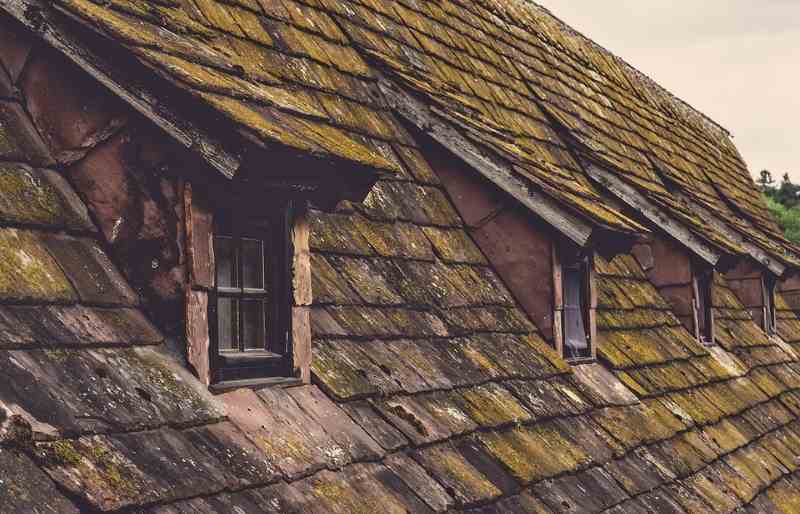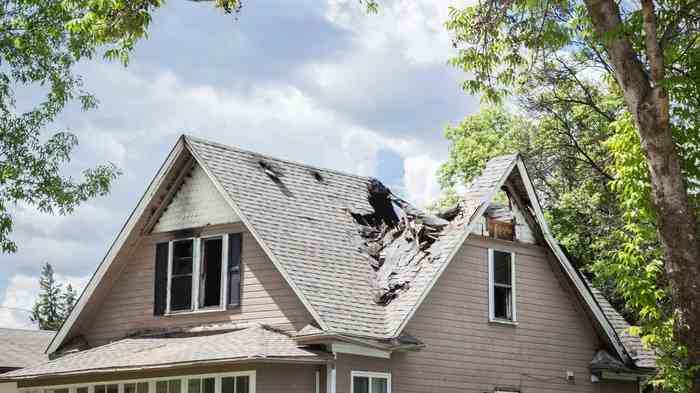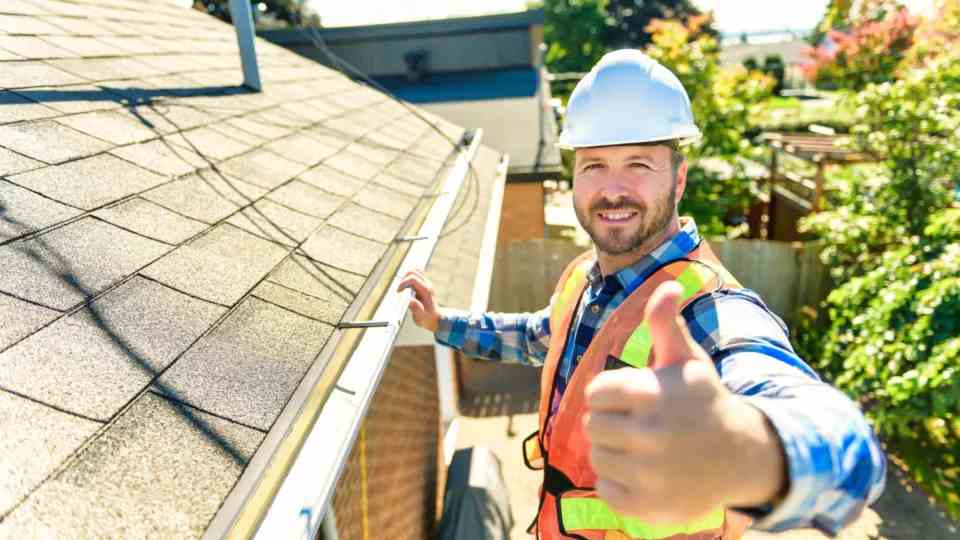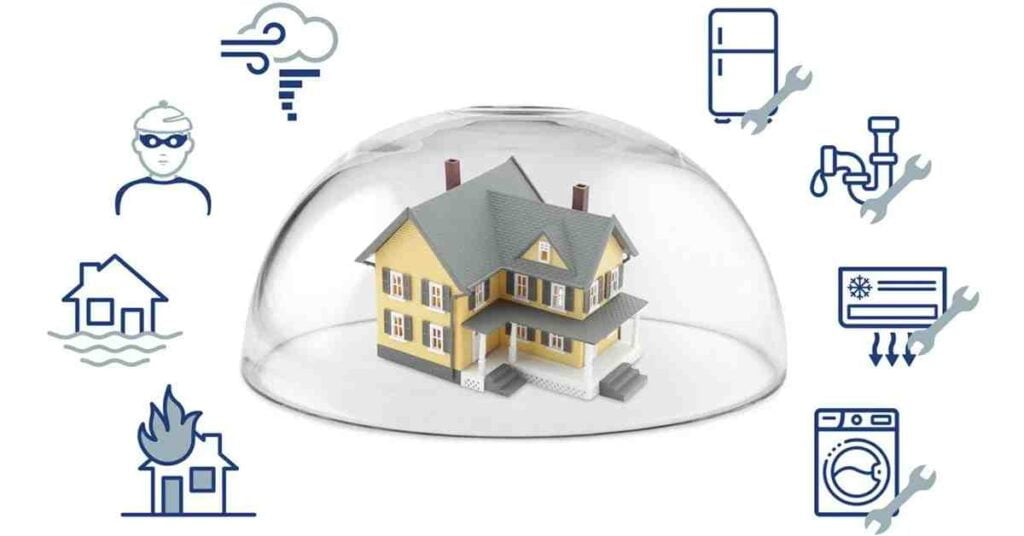Owning a home is a big responsibility, and having the right insurance is a crucial part of protecting your investment. But what if your home has an old roof? Can you still get homeowners insurance? This is a common question many homeowners face. In this article, we will explore the challenges and solutions for getting homeowners insurance with an old roof. We’ll cover why insurance companies care about your roof’s condition, the types of coverage available, and tips to improve your chances of getting insured. Let’s dive in and find out how you can protect your home, even with an old roof.
Can I Get Homeowners Insurance With An Old Roof?

Yes, you can get homeowners insurance with an old roof, but it may come with certain challenges and considerations. Insurance companies are often cautious about insuring homes with older roofs due to the increased risk of damage and the likelihood of claims. An old roof can be more susceptible to leaks, structural issues, and damage from weather events, which makes it a higher risk for insurers.
To secure homeowners insurance with an old roof, you might need to explore high-risk insurance policies. These policies are designed for homes that standard insurers might consider too risky to cover. However, high-risk insurance often comes with higher premiums and may offer less comprehensive coverage. For instance, the coverage might be limited to the actual cash value of the roof, which takes depreciation into account, rather than the full replacement cost.
One effective strategy to improve your chances of getting insured is to have a professional roof inspection. A roof certification from a licensed inspector can provide evidence of the roof’s condition and remaining lifespan, which can be reassuring to insurers. Additionally, performing necessary maintenance and minor repairs can demonstrate your commitment to maintaining the roof and reducing potential risks.
In some cases, insurers might require you to replace the roof before they agree to provide coverage. While this can be a significant upfront expense, it can also lead to lower insurance premiums and better protection in the long run. If replacing the roof is not immediately feasible, negotiating with insurers and exploring different insurance providers can help you find a policy that meets your needs.
Overall, while getting homeowners insurance with an old roof can be more complex, it is certainly possible with the right approach and preparation. By understanding the challenges, exploring high-risk insurance options, and taking proactive steps to maintain your roof, you can secure the coverage you need for your home.
Roof Requirements for Homeowners Insurance
When it comes to homeowners insurance, the condition and age of your roof play a significant role in determining your coverage options and premiums. Here are some key requirements and considerations:
- Roof Age: Insurance companies often have specific guidelines regarding the age of the roof. Older roofs, typically those over 20 years old, may be subject to higher premiums or limited coverage options. Some insurers might even refuse to cover roofs beyond a certain age.
- Roof Inspection: Many insurers require a roof inspection before issuing or renewing a policy. The inspection assesses the roof’s condition, identifying any signs of wear and tear, damage, or potential issues. A well-maintained roof is more likely to qualify for standard coverage.
- Roofing Materials: The type of roofing material used can also impact your insurance coverage. Durable materials like metal or tile may be favored by insurers due to their longevity and resistance to damage. Conversely, materials like wood shingles may be considered higher risk.
- Maintenance and Repairs: Regular maintenance and timely repairs are crucial for keeping your roof in good condition. Insurers may require proof of maintenance, such as receipts for repairs or inspections, to ensure the roof is properly cared for.
- Compliance with Building Codes: Your roof must comply with local building codes and regulations. Insurers may require updates or modifications to bring the roof up to code, especially if it has been in place for many years.
- Actual Cash Value vs. Replacement Cost: For older roofs, some insurers may only offer actual cash value coverage, which takes depreciation into account. This means that in the event of a claim, the payout would be based on the roof’s depreciated value rather than the full replacement cost.
- High-Risk Coverage: If your roof is deemed high-risk due to its age or condition, you may need to seek high-risk homeowners insurance. These policies often come with higher premiums and may offer less protection.
Understanding these requirements can help you take proactive steps to maintain your roof and explore your insurance options.
Will Insurance Cover A 20-year-old Roof?
Yes, homeowners insurance can cover a 20-year-old roof, but there are some important considerations. If your insurance policy is already in force and you accurately disclosed the age of the roof when you applied, the policy will typically cover damage caused by covered perils such as fire, hail, or wind. However, insurance companies are often wary of older roofs due to the increased risk of damage and the potential for costly repairs. As a result, some insurers may only offer actual cash value coverage for a 20-year-old roof, which means the payout would be based on the roof’s depreciated value rather than the full replacement cost. Additionally, some insurers might refuse to renew policies for homes with roofs older than 20 years unless they pass a roof inspection.
What to do If Your Insurance is Canceled Because of A Damaged Roof?

If your homeowners insurance is canceled due to a damaged roof, it can be a stressful situation, but there are several steps you can take to address the issue and potentially restore your coverage:
- Understand the Reason for Cancellation: Contact your insurance company to get a clear explanation of why your policy was canceled. Understanding the specific issues with your roof will help you know what needs to be fixed.
- Get a Professional Inspection: Hire a licensed roofing professional to inspect your roof. This will provide you with a detailed assessment of the damage and the necessary repairs.
- Repair or Replace the Roof: Based on the inspection report, carry out the required repairs or consider replacing the roof if it’s severely damaged. Addressing the issues promptly can help you regain insurance coverage.
- Document All Repairs: Keep detailed records of all the repairs, including receipts, photos, and inspection reports. This documentation will be crucial when you present your case to the insurance company or a new insurer.
- Shop for New Insurance: If your current insurer is unwilling to reinstate your policy, start looking for a new insurance provider. Some companies specialize in high-risk policies and might be more willing to insure your home after repairs.
- Appeal the Cancellation: If you believe the cancellation was unjustified, you can appeal the decision. Provide the insurance company with the inspection report and documentation of repairs to support your case.
- Consider Temporary Coverage: While you are addressing the roof issues, look into temporary insurance options. Some insurers offer short-term policies that can provide coverage until you secure a long-term solution.
By taking these steps, you can address the roof issues and work towards restoring your homeowners insurance. It’s important to act quickly and keep thorough records to make the process smoother.
How to Get Home Insurance With An Old Roof?
Getting homeowners insurance with a bad roof can be challenging, but it’s possible with the right approach. Here are some steps to help you navigate the process:

- Assess the Condition of Your Roof: Conduct a thorough inspection to identify any visible damage or deterioration. Look for missing shingles, leaks, or signs of aging. Consider hiring a professional roofer to provide a detailed assessment and report on the condition of your roof.
- Make Necessary Repairs: Based on the inspection, make any necessary repairs to improve the condition of your roof. This can include replacing damaged shingles, fixing leaks, or reinforcing weak areas. Keep detailed records of all repairs, including receipts and before-and-after photos.
- Gather Documentation: Obtain a copy of the professional inspection report. Collect any maintenance records or receipts for past repairs and upkeep. Take clear photos of your roof from different angles to show its current condition.
- Research Insurance Providers: Research different insurance companies to find those that are more likely to offer coverage for homes with older or damaged roofs. Look for reviews and ratings to gauge the reliability and customer service of potential insurers.
- Request Quotes: Reach out to multiple insurance providers to request quotes for homeowners insurance. Be upfront about the age and condition of your roof. Share the inspection report, maintenance records, and photos with the insurers to support your application.
- Evaluate Coverage Options: Compare the quotes you receive, paying attention to coverage limits, deductibles, and premiums. Be aware of the difference between actual cash value coverage and replacement cost coverage. Older roofs may only qualify for actual cash value coverage.
- Ask Questions: Ask the insurance agents any questions you have about the policy terms, coverage options, and any potential exclusions related to your roof. Check if there are any discounts available for making repairs or improvements to your roof.
- Choose a Policy: Based on your research and the quotes you receive, choose the insurance policy that best meets your needs and budget. Carefully review the policy documents to ensure you understand the coverage and any conditions related to your roof.
- Maintain Your Roof: Schedule regular roof inspections to catch any issues early and keep your roof in good condition. Continue to perform necessary maintenance and repairs to extend the life of your roof and maintain your insurance coverage.
By following these steps, you can improve your chances of securing homeowners insurance with a bad roof and ensure your home is adequately protected.
How Much Does It Cost to Repair or Replace A Roof?
The cost of repairing or replacing a roof in 2024 can vary widely based on factors like the size of the roof, the materials used, and the location. For roof repairs, homeowners can expect to spend between $400 and $1,500. Minor repairs, such as fixing small leaks or replacing a few shingles, tend to be on the lower end of this range, while more extensive repairs can be more costly.
When it comes to roof replacement, the average cost for an average-sized home is around $11,500. However, this can vary significantly depending on the type of roofing material. For instance, more affordable asphalt shingles typically cost between $5,500 and $11,000. On the other hand, metal roofs can range from $8,000 to $15,000, and slate roofs, which are among the most expensive options, can cost up to $80,000 for high-end materials. These costs include materials, labor, and any additional fees such as permits.
Alternatives to Traditional Homeowners Insurance
If you’re having difficulty obtaining traditional homeowners insurance or are looking for alternative options, there are several alternatives you can consider:
1. FAIR Plans
FAIR (Fair Access to Insurance Requirements) Plans provide essential coverage for homeowners who have been denied insurance by private companies. These state-sponsored programs are designed to ensure that everyone has access to basic insurance coverage, even if their property is considered high-risk.
2. High-Risk Insurance Providers
High-risk insurance providers specialize in offering coverage for properties that are deemed too risky for standard insurance companies. These policies may come with higher premiums, but they can provide the necessary protection for homes with unique or high-risk characteristics.
3. Bad Roof Endorsements
Some insurance companies offer endorsements specifically for bad roofs. These endorsements can provide additional coverage for roof-related issues, although they may come with higher premiums and specific conditions.
4. Small Regional Insurers
Small regional insurers may offer more flexible coverage options compared to larger national companies. These insurers often have a better understanding of local risks and may be more willing to provide coverage for homes that don’t meet the criteria of traditional insurers.
5. Surplus Lines Insurance
Surplus lines insurance provides coverage for properties with unique or high-risk characteristics that standard insurers may not cover. These policies are typically offered by specialized insurers and can be a viable alternative for homeowners who struggle to find coverage through traditional means.
6. Self-Insurance
Self-insurance involves setting aside funds to cover potential losses instead of purchasing an insurance policy. While this option requires significant financial discipline and resources, it can be a way to manage risk without relying on traditional insurance.
7. State-Sponsored Programs
In addition to FAIR Plans, some states offer other insurance programs to help homeowners who have difficulty obtaining coverage. These programs can provide an alternative source of protection for your home.
Does Homeowners Insurance Cover Repiping?
By exploring these alternatives, you can find a solution that meets your needs and ensures your home is adequately protected.
What is Considered An Old Roof?
An old roof is generally considered to be one that is nearing or has surpassed its expected lifespan. The lifespan of a roof can vary depending on the type of roofing material used. For example, asphalt shingles, which are the most common roofing material, typically last between 20 to 30 years. Metal roofs, on the other hand, can endure for 50 years or more. Signs of an aging roof include curling, cracking, or missing shingles, as well as leaks, stains, and sagging areas. If your roof is showing these signs and is approaching the end of its expected lifespan, it may be considered old and in need of repair or replacement.
FAQs
Q 1. Can I get a discount on my homeowners insurance if I replace my old roof?
Ans. Yes, many insurance companies offer discounts for new roofs as they are less likely to suffer damage. It’s worth asking your insurer about potential discounts if you plan to replace your roof.
Q 2. What types of roofing materials are most favored by insurers?
Ans. Insurers often favor durable roofing materials such as metal, tile, and slate due to their longevity and resistance to damage. Asphalt shingles are also commonly accepted, but wood shingles may be considered higher risk.
Q 3. How often should I have my roof inspected?
Ans. It’s recommended to have your roof inspected at least once a year, and after any major weather events, to catch any issues early and maintain its condition.
Q 4. Are there any specific endorsements or riders I can add to my policy for better roof coverage?
Ans. Yes, some insurers offer endorsements or riders that provide additional coverage for roof-related issues. These can include replacement cost coverage or specific coverage for wind and hail damage.
Q 5. How can I prove the age of my roof to my insurance company?
Ans. You can provide documentation such as receipts from the original installation, inspection reports, or records of any repairs or replacements to prove the age of your roof.
Q 6. What are the common signs that my roof needs to be replaced?
Ans. Common signs include curling or missing shingles, leaks, water stains on ceilings or walls, sagging areas, and visible wear and tear.
Q 7. What should I do if my insurance company requires a roof inspection?
Ans. Schedule an inspection with a licensed roofing contractor. Provide the inspection report to your insurer to demonstrate the roof’s condition and any necessary repairs.
Conclusion
In conclusion, getting homeowners insurance with an old roof might seem challenging, but it’s not impossible. By understanding the concerns of insurance companies, exploring different coverage options, and maintaining your roof well, you can improve your chances of getting the protection you need. Remember, it’s important to be proactive—consider getting a roof inspection, talking openly with insurers, and planning for future repairs or replacements. If you’re denied coverage, don’t give up; there are alternatives and steps you can take. With a little effort and the right approach, you can secure the right insurance for your home.

Shubham is a passionate insurance expert with years of experience in the industry. I write about home, auto, travel, life, and health insurance to help readers make informed decisions. My goal is to break down the details of coverage, costs, and claims in a straightforward, easy-to-understand way, so you can protect what matters most without the confusion.


